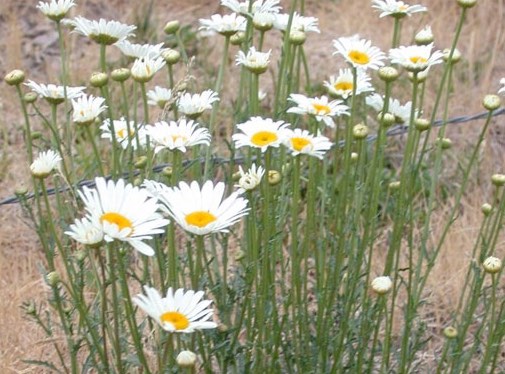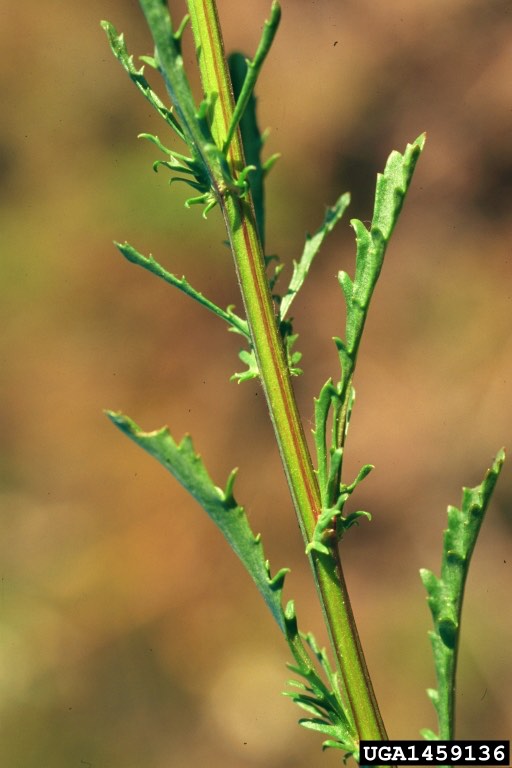Ohio’s Noxious Weeds
Oxeye daisy

Leucanthemum vulgare, oxeye daisy
Family: Composite, Asteraceae.
Habitat: Meadows, roadsides, old pastures, and areas low in fertility.
Life cycle: Perennial; spreads by rhizomes and seeds.
Growth Habit: Erect, 1-3 feet high.
Leaves: 1-3 inches long; alternate, dark green, simple, lobed – especially the larger basal leaves. Basal leaves have large petioles.
Stem: Smooth; may or may not be branched.
Flower: June – August. Typical daisy-like flowers with white outer petals and yellow centers which are depressed in the center. Flowers are 1-2 inches in diameter and solitary on the stem.
Root: Rapidly spreading root system.
Similar plants: Oxeye daisy may resemble some species of asters. However, asters typically have unlobed leaves. Fleabanes have similar flowers that are much smaller than oxeye daisy and occur in clusters.
The problem is….Oxeye daisy can establish itself quickly in uncultivated areas, and can readily replace forage grasses in pastures. Its early blooming habit and rapid seed maturation allow it to become established early in the season. Seeds may mature even if flower stalks are mowed or cut down. Oxeye daisy is often included in wildflower seed mixtures. Avoid these mixtures; this aggressive weed will quickly out-compete more desirable wildflower species.


Oxeye daisy was introduced from Europe. It has an attractive flower and is sometimes recommended for meadow plantings in other states.


